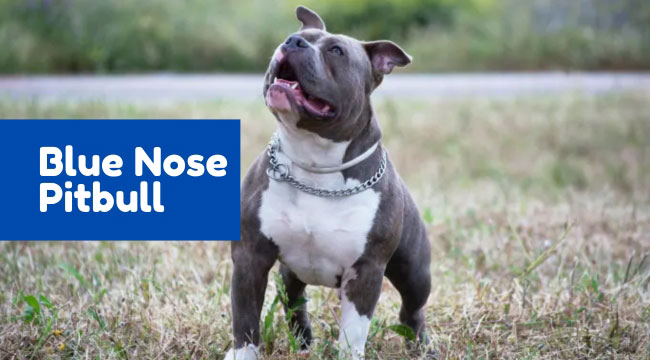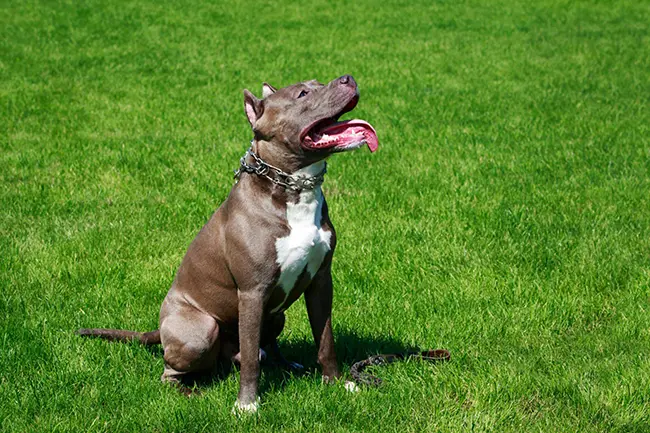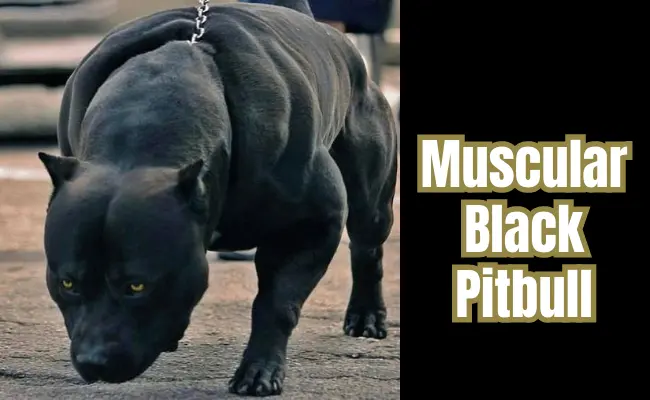
Waghound.com is an Amazon Associate, and we earn from qualifying purchases.
Crusty white dogs refer to canine breeds with stains, mucus, or crust around their eyes, a term popularized by internet meme enthusiasts. Breeds like Shih Tzu and Pugs are known to experience this crusty phenomenon near their eyes, which can occasionally give them an unfavorable appearance.
In the ever-evolving world of trends and the unstoppable force of the internet, nothing and no one is exempt. From individuals to inanimate objects, even our four-legged friends, anyone can rise to meme stardom overnight. Lately, the focus of meme creators has taken an unexpected turn, shining the spotlight on an unlikely subject: the “Crusty White Dogs.”
You’ve probably stumbled upon the viral videos showcasing these white canines, who, unfortunately, seem to be receiving an unusual amount of criticism from the public. But what’s the story behind this peculiar trend, and what’s all the fuss about?
Behold the Crusty White Dog memes, portraying these innocent creatures as unsightly, shameful, and dare we say, the most reviled dog breed of all time. To truly understand the fascination with these dogs and the viral wave surrounding them, we must first uncover the essence of what it means to be labeled a “crusty white dog” and delve into the reasons behind the perceived ugliness associated with them.
Crusty White Dogs: Who Are They?
Canines with crusty eyes are simply referred to as “crusty-eyed dogs.” The presence of crust near their eyes is caused by dried-up tears and mucus that accumulate in the fur around the eye area. These stubborn tear stains can be quite challenging to eliminate, but with proper treatment, it is possible to remove them and restore the clarity of your dog’s eyes.
Neglecting this issue can lead to various problems, including allergies, eye irritation, and persistent itching. In some cases, the condition worsens, and the tear stains become a permanent feature in the dog’s eyes, hence the term “crusty.” For dogs with white fur, this can result in an unpleasant and unattractive appearance if they develop these stains.
In the realm of internet and meme trends, owning a white dog with teary, crusty eyes has unfortunately been associated with shame. However, it’s essential to remember that with attentive care and proper remedies, the issue can be managed and your furry companion can have bright, healthy eyes once more.
How Crusty White Dogs Became A Meme?
The trend of labeling these crusty white-eyed dogs as ugly originated from TikTok videos. A surge of videos emerged, portraying these canines as shady, unattractive, and something to be ashamed of. As this trend gained momentum, it spread to other social media platforms like Twitter, Reddit, and Instagram.
In response to the growing criticism, some dog owners who had white dogs with crusty eyes took a stand. They defended their beloved pets by creating positive videos showcasing the wonderful qualities and benefits of owning a white dog. However, in the vast expanse of the meme world, forgiveness was scarce for these white dogs, and they were labeled as one of the worst dog breeds in existence. This animosity was fueled by numerous content creators, resulting in an overwhelming flood of over 10,000 videos on this very topic.
This is how the world reacted to the phenomenon of crusty-eyed white dogs:
One lady took on the task of rating a dozen dogs based on their eye crusts!
And some viral tweets as well:
bitches always like “isn’t my dog so cute?” but it’s a white dog with those crispy red eye stains
— Bʀᴀɴᴅᴏɴ (@bjbjonez) July 23, 2020
neighbors growing up had a viscious one named popcorn pic.twitter.com/zMUHbSn1ce
— Bʀᴀɴᴅᴏɴ (@bjbjonez) July 23, 2020
crusty eyed white dogs are so ugly idc if theyre the sweetest dog in the world, THEYRE UGLY MFS‼️‼️
— ig: sugarpinekib (@stickseason) December 25, 2020
Popular White Dog Breeds Prone to Crusty Eyes
Whether a dog is white, black, or brown, any canine can experience issues with crusty and mucus-stained eyes. However, there are certain dog breeds that are more susceptible to displaying these symptoms. Some of the crusty white dog breeds include:
- Shih Tzu
- Maltese
- Pugs
- White Poodle
- White Pomeranian
These breeds are known to be more prone to developing crusty eyes, also referred to as eye boogers. If you happen to own any of the aforementioned dog breeds, there’s no need to worry. Despite facing some criticism from the world, these breeds are among the most widely adopted dogs globally. As a responsible owner, it’s essential to explore ways to address and treat any teary eye issues your beloved companion may experience.
What Causes Crusty Eyes in White Dogs?
Crusty eyes in white dogs occur due to the accumulation of tear stains, mucus, and pus around their eye regions. When owners neglect to clean their dog’s eyes over an extended period, these tear stains transform into unsightly crusts. Therefore, it is crucial to make a habit of regularly cleaning your dog’s eyes to prevent the buildup of crust and mucus. By doing so, you can ensure your furry companion’s eyes stay clear and healthy.
How To Clean Crust From Your Dog’s Eyes?
To clean crust from your dog’s eyes, follow these steps:
- Prepare: Start by gathering the necessary supplies, such as clean, soft cloths or gauze pads, and a veterinarian-approved eye cleaning solution. Avoid using harsh chemicals or human eye drops, as they can be harmful to dogs.
- Wash Your Hands: Before touching your dog’s eyes, ensure your hands are clean to prevent any potential infection.
- Comfort Your Dog: Make sure your dog is calm and comfortable before attempting to clean their eyes. If your pet is anxious, consider having someone assist you by gently holding them still.
- Gently Dampen the Cloth: Moisten the cloth or gauze pad with the eye cleaning solution. Ensure it’s not dripping wet, as excess liquid may cause discomfort to your dog.
- Wipe Away the Crust: Gently wipe away the crust around your dog’s eyes using the damp cloth. Be careful not to apply too much pressure or rub too hard, as the eye area is sensitive.
- Use a Different Cloth for Each Eye: To prevent the spread of any infection or irritation, use a separate cloth for each eye.
- Check for Redness or Irritation: While cleaning, observe your dog’s eyes for signs of redness, irritation, or any other abnormalities. If you notice anything unusual, consult your veterinarian.
- Reward Your Dog: After the cleaning session, reward your furry friend with treats or praise to reinforce positive behavior and create a positive association with the process.
- Establish a Routine: Regularly clean your dog’s eyes, especially if they are prone to crustiness. Establishing a routine will help prevent excessive buildup and promote good eye hygiene.
- Visit the Vet if Necessary: If you notice persistent crustiness, excessive tearing, or any eye-related concerns, consult your veterinarian. They can examine your dog’s eyes and provide appropriate guidance or treatment if needed.
Remember, the health of your dog’s eyes is essential for their overall well-being. By following these steps and maintaining good eye hygiene, you can help keep your furry companion’s eyes clean and comfortable.
In Defense of Crusty White Dogs
With each passing month, the online world discovers a fresh subject to unleash its bottled-up angst upon. Like passing fads, various topics, from the enigmatic “ice age baby” to peculiar figures like Matthew Morrison and even entire generations such as the baby boomers, undergo relentless cycles of scrutiny in the vast realm of the internet. Lately, a peculiar target has emerged under the sharp lens of internet scrutiny – crusty white dogs. You know the type – those ankle-biters, yappy and tear-stained, often Maltese or Shih Tzu breeds.
For the uninitiated, the crustiness in question stems from dried-up tears and mucus accumulating around these dogs’ eyes, leaving visible red-brown tear stains on their pristine white fur. The scientific explanation revolves around porphyrin molecules present in dog tears, which are rich in iron. Upon exposure to oxygen, these molecules dry up, leaving behind the rusty-colored stains that give rise to the moniker “crusty white dogs.”
As the proud owner of a white dog named Jasper, I feel an inherent duty to intervene on behalf of these canines. Much like the Lorax, who speaks for the trees, I stand up for the cause of the crusty white dogs. Though Jasper is not a Maltese or Shih Tzu, he is unmistakably white, and yes, he has been known to exhibit crustiness from time to time. My Havanese enjoys lounging around and rolling in the grass during sunny afternoons. Curiously, since he became blind, I’ve noticed a significant increase in his crust factor, the reasons for which remain a mystery to me. Perhaps he leaves his eyes open for extended periods, leading to excess tear production. Or maybe he tends to doze with his eyes slightly ajar. And who knows, maybe his encounters with chair legs and stair steps play a role in his teary predicament. If only I could ask him. Nevertheless, his eyes are indeed crusty. I should also note that my other dog, Moose, a brown Havanese like Jasper, shares a proportional amount of crustiness.
In my quest to combat the crust factor, I embarked on a little research. The key to halting the staining and crust build-up is consistently cleaning your dog’s undereye fur. Since the stains are caused by tears, it’s only logical that cleaning the fur would be the remedy. Surprisingly, it took me a while to come to this realization. Nevertheless, I purchased two short, thin-toothed combs with rounded teeth specifically designed for this purpose. Every few days, I gently heat a small bowl of water to soften the fur around Jasper’s eyes, ensuring the water’s safety. Once the fur is softened and the crust loosens, I carefully comb the affected area. After weeks of consistent effort, the difference is undeniable! Jasper has grown accustomed to the process and doesn’t mind the combing at all. While I’ve heard of special eye drops for this purpose, I prefer my current method; I’m hesitant to put anything into Jasper’s eyes.
In conclusion, crusty white dogs are not inherently crusty by nature; rather, it’s a consequence of inadequate care from their human owners. Let us not blame the innocent Havanese for this plight. To my fellow crusty-white-dog-owners, I implore you to invest in a tear stain remover comb – it works wonders. And to the naysayers and haters, I pose a question: why single out crusty white dogs when animals of all fur colors can be equally affected? Consider white cats, for example. Eye crust does not discriminate, so why should your frustration target only small animals? Let us either hate them all or none at all. Thank you, and good night.



